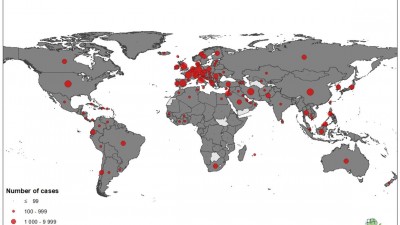Table 5 shows predicted probabilities from logistic regressions of family size on women’s labor force participation, separately for all work (including work on family farm and in family business) and for wage work. This regression controls for a variety of socio-economic background factors and place of residence.9 In order to address the endogeneity of income, family income in this analysis excludes women’s wage income. For all work, i.e. combining work on family farm, caring for livestock, and work in family business and wage work, women with a single child are actually less likely to be employed than women with larger families.
But in India, fertility rates fell rapidly despite modest socio-economic progress, thanks to aggressive family welfare programmes that promoted small families through targets, incentives, and disincentives. Today, the five southern states have total fertility rates below 1.6, with Karnataka at 1.6 and Tamil Nadu at 1.4. In other words, fertility rates in these states match or are less than many European countries. Population level TFRs might be understated for the country as a whole, but our sample of one child families has been deliberately chosen to represent largely (we think) those that have completed childbearing11. Table 8 shows the differences in total educational expenditure in the year prior to the survey for 30,285 children ages 6–14. In these regressions, in addition to parental characteristics and household income, we also control for child’s grade, gender and age.
The “one-child policy” – limiting births per couple through coercive measures – was implemented in the early 1980s, and fertility dropped dramatically. At the non-profit, Population Foundation of India (PFI), executive director, Poonam Muttreja, finds strong links between a woman’s education levels and employment status and preferred family size. “Women with less education and less wealth tend to choose to have more than two children. Women with longer years of education and more wealth often want to have fewer than two,” she says.
These policies, combined with new sex determination technologies and widely prevalent culture of son-preference have exacerbated gender inequality in the form of skewed sex ratios. The resulting bride shortages have led to a marriage crisis and stoked local as well as global social anxieties. In China, there are fears of environmental and industrial pollution leading to a diminution in sperm quality; in India ethnically varying fertility transitions are deployed to further religious and political agendas; globally there is the spectre of ‘surplus’ men and ‘scarce’ women in rising Asia. Additionally, with crucial generational shifts posing a threat to the earlier stability of marriage and child-centeredness, reproduction and reproductive processes are provoking yet newer moral and cultural anxieties.
Taking measures in this direction ahead, the state of Uttar Pradesh has adopted a two-child policy aimed to limit the growing population in the state. Promotion of Two-Child Norm Bill, 2015, therefore, seeks to provide for the two-child norm in a family and promote small family norms in the future generation. Bill provides for certain incentives like free education, employment, etc. to the children of such couples who adopt a small family norm.
- Most importantly, by aggressively participating in regulating the use of these technologies, the Indian and Chinese states are also keenly redefining the intimate lives of their citizenry.
- Conversely those with high consumption aspirations may meet their consumption needs by curtailing fertility when faced with the prospect of low income generated by poor economic conditions.
- Although the Chinese government was trying to spark new growth in the population, some experts did not think it would be enough.140 Many called for the government to remove the limit altogether, though most women and couples already had adopted the idea that one child is enough and to have more is not in their best interest.
- Moreover, we do not have any evidence to suggest significant levels of secondary or acquired sterility in India.
Today’s high paternal ages at childbirth are not exceptionally high
A low TFR does not automatically lead to a higher proportion of one-child families. Punjab and Himachal Pradesh both have TFRs below 2 but only 3% of families seem to stop at one child. In contrast, Assam and West Bengal with TFRs of about 2.2 have 10–12% families who appear to have stopped at one child (on this regional variation, but using census data, see also Pradhan and Sekher, 2014)6. The two main countries holding this population stock are China, closely followed by India, which is expected to surpass China in the near future. In India, which is the subject of this study, five different cities were visited in 2013 and so the discrepancies between the statistical data and the situations shown by the land itself were analyzed on-site.
How does the one child policy impact social and economic outcomes?
“Educating girls is the most effective contraceptive,” she said, pointing to data showing that Indian women with 12 years of schooling have no more than two children, while those with no education have an average of three, according to the latest survey results. The irony is that India’s birth rate and the size of families are decreasing because of women’s own reproductive choices. Many women are getting surgical contraception after having two children (or after having a son).
The authors come up with three recommendations to tackle the issue – women empowerment, education and industrialization. Do these one child families in India represent what Livi Bacci (1973) called the ‘forerunners’ of fertility decline in the rest of the population? Such heterogeneity would be analogous to the heterogeneity of career and fertility preferences underlying average low TFRs in western countries today (Hakim, 2003). Rising social and economic aspirations in East Asia have often been expressed through high levels of investments in children. Here we find considerable parallels with India where social mobility aspirations find an expression in heavy child specific investments and the curtailment of fertility. Two dimensions of the recent economic transformation are relevant for very low fertility as a route to social mobility.
Acknowledgement of Country
- Demographers say India will need to extend retirement ages meaningfully, and policies must prioritise increasing healthy years through better health screenings, and stronger social security to ensure an active and productive older population – a potential “silver dividend”, external.
- If a significant cultural transformation and renegotiation of gender roles must precede below replacement fertility, this appears to be far in the future for India, particularly in the populous north-central states of Uttar Pradesh, Madhya Pradesh and Bihar (Desai et al, 2010).
- A veritable media industry has arisen in the US criticising the one child policy, although it chooses to overlook the tens of millions of coercive pregnancies in other countries where family planning and legal abortion are not available.
- Other aspects of family and reproductive life that seem to characterize the low fertility populations of Western, Northern and East-Central Europe include the kind of ideological transitions implicated in rises in cohabitation and declines in marriage, rises in divorce rates, rises in births outside formal marriage.
- According to the United Nations Department of Economic and Social Affairs, population of India is 1.32 billion, hitting the 1-billion mark.
From controlling population growth, this can help suppress the increasing carbon emission in India. As a result, would help slow down the exacerbating global warming and the consequences that come with it. Between 1952 and 1979, the Chinese total fertility rate fell from 6.5 to 2.75, and today all age groups and social classes prefer to have two children or fewer.5 Some western commentators believe China over-reacted,6 whereas others emphasise that even small one child policy in india changes in the timing of a decline in fertility are important. The difference between a total fertility rate of 2.1, which might have been achieved without the policy, and a total fertility rate of 1.6 (found today) releases 24% more resources for the family and national investment.
If social mobility is indeed a key motivating factor, increased investments in children are more likely to bear fruit for families that are already privileged; if low fertility becomes the norm rather than the exception, its impact on social mobility is likely to dampen. However, the centrality of the conjugal unit as a motivating force for a single child is not supported by the data. The prevalence of nuclear families among households with one, two, or more children is about 50% in our sample.
Study
While there are important regional differences within the very low fertility experience of Europe, overall the literature contends that this very low fertility is primarily achieved by steadily rising ages at marriage and childbearing. The magnitude of the relationship between family size and investments in children poses a striking contrast with the other relationships reported earlier. While one and two child families increase their consumption marginally and families are somewhat more likely to engage in pleasure activities such as family outings, these relationships are dwarfed in comparison to the large and statistically significant relationship between family size and investments in children. The second phenomenon of interest is a growing public recognition of the poor quality of education given in a wide range of educational institutions. When barely 50% of enrolled children are able to read (Pratham 2005), it is not surprising that parents seek alternatives to government schools.
Note that children who are not currently in school are dropped from this analysis, but with the sharp increase in school enrollment in the last decade, nearly 90% of the children aged 6–14 were enrolled in 2004–5 (Desai et al. 2010) and our sample remains large. Finally, we need to be sure that these one child families are not an unfortunate outcome of families ending up with fewer children than they would like; that is, they do not represent an unmet need for fertility. Hence, we try to establish the wantedness of the one child family by asking a series of questions about its bio-demographic and social correlates. Despite the existence of various birth control measures and various family planning programmes in force for many years to motivate the people to accept these birth control methods, the problem of population explosion still remains.
To do this, we compare families at different parities, those with one, two, or more than two children. We argue that low fertility in India is not because consumption or personal freedom are more valued than children but rather because children are highly valued. Small families tend to invest more in educational expenditures for their children expecting these higher expenditures to lead to greater social mobility. The demographic discourse on India has remained focused on the first demographic transition with relatively low expectations for below replacement fertility.
As the most populous countries in the world, India and China have come to mark our collective conscience in significant ways. Recent research suggests that reproduction continues to be a national obsession in both countries. The stance has however shifted considerably from fears of overpopulation and high fertility rates, to policies encouraging childbearing and addressing infertility through assisted reproduction.
























Comments